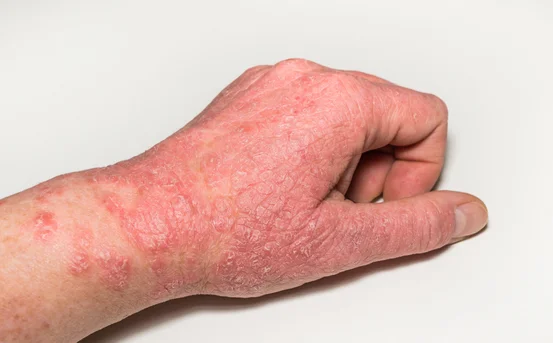Foot disease is a general term that encompasses a variety of disorders affecting the feet ranging from infections and inflammatory conditions to circulatory problems and structural deformities. Left untreated, these issues can worsen over time and potentially lead to severe complications such as chronic pain, mobility limitations, or even limb amputation in extreme cases.
Our feet bear the brunt of our daily activities yet, they’re often the most neglected part of the body. From walking and running to simply standing, our feet endure constant pressure and exposure. Over time, this can lead to various foot problems, some of which may be symptomatic of underlying foot disease. Recognizing the symptoms of foot disease early can prevent complications and improve treatment outcomes.
What is Foot Disease?
Foot disease isn’t a single condition it refers to a range of disorders that affect the structure, skin, bones, joints, or blood vessels of the feet. These include infections, nerve-related problems, circulatory issues, and deformities. People with diabetes, poor circulation, or weakened immune systems are especially at risk. However, foot diseases can affect anyone, regardless of age or medical history.
Common Symptoms of Foot Disease
The signs of foot disease may begin subtly but can progress if ignored. If you notice any of the following symptoms persisting for more than a few days, it’s crucial to consult a podiatrist or healthcare provider.
- Persistent Foot Pain :- Pain is one of the earliest indicators of foot disease. While temporary soreness after a long day on your feet is normal, chronic or sharp pain especially without any apparent cause could signal a deeper problem. Conditions such as plantar fasciitis, arthritis, or peripheral neuropathy may be to blame. If the pain doesn’t improve with rest or worsens over time, it should be professionally assessed.
- Swelling and Inflammation :- Swelling in the feet can result from overuse or injury, but persistent puffiness might indicate circulatory issues, infections, or conditions like gout or deep vein thrombosis (DVT). Swelling accompanied by redness, warmth, and tenderness often suggests inflammation or infection.
- Numbness or Tingling Sensation :- A tingling or “pins and needles” sensation in the feet, especially if recurring, is often a sign of nerve involvement. This is a hallmark symptom of peripheral neuropathy, commonly associated with diabetes. Over time, this nerve damage can lead to loss of sensation, making it difficult to detect injuries, infections, or ulcers.
- Skin Discoloration or Changes in Texture :- Changes in skin color such as redness, bluish tint, or dark patches could indicate poor circulation, infections, or even signs of skin cancer. Additionally, dry, cracked skin (particularly on the heels), rashes, or persistent scaling may point to fungal infections like athlete’s foot or psoriasis.
- Open Sores or Ulcers :- One of the more serious symptoms of foot disease is the development of non-healing sores or ulcers. This is especially common in people with diabetes. Foot ulcers can start as small cuts or blisters and progress rapidly if left untreated. Because of reduced sensation, many patients don’t notice them until the wound becomes infected.
Unusual Symptoms That Should Raise Concern
While many symptoms of foot disease are relatively common, some less obvious signs can also indicate an underlying issue.
- Unpleasant Odor Despite Hygiene :- A strong, foul odor from the feet that doesn’t improve with washing could signal a fungal or bacterial infection. These infections thrive in warm, moist environments like sweaty shoes and can worsen over time.
- Deformities and Structural Changes :- A noticeable change in the shape or alignment of the foot may be a sign of structural disorders like bunions, hammertoes, or collapsed arches. Over time, these deformities can impair walking, cause pain, and increase the risk of further complications if not treated early.
- Thickened or Discolored Toenails :- Yellow, brittle, or thickened toenails are typically associated with fungal infections. While nail fungus might seem like a cosmetic concern, untreated infections can spread to other toes or skin areas. In severe cases, they may even lead to complications for people with diabetes or compromised immunity.
- Difficulty Walking or Balancing :- Foot disease can also affect your gait or balance. If you find yourself limping, adjusting your posture while walking, or feeling unsteady on your feet, it could point to joint or nerve issues that require attention.
Foot Disease and Systemic Conditions
It’s important to note that foot symptoms don’t always originate in the foot itself. Many systemic diseases first manifest in the feet. Diabetes is one of the most significant contributors to foot problems. High blood sugar levels can damage nerves and blood vessels, leading to numbness, poor circulation, and increased risk of infection.
Likewise, autoimmune diseases like rheumatoid arthritis or lupus can cause inflammation in the foot joints, while vascular disorders can affect blood flow, making wounds slower to heal.
When to See a Doctor?
Any foot symptom that persists longer than a few days, worsens, or causes discomfort should prompt a visit to a podiatrist or healthcare professional. Don’t wait until the condition escalates. Early diagnosis and treatment can make a significant difference in managing foot disease and preventing serious complications such as infections, abscesses, or even amputation in severe cases.
Seek immediate medical attention if you experience :-
-
Sudden and severe pain
-
Loss of sensation in the feet
-
Signs of infection like pus, warmth, and fever
-
A wound or ulcer that won’t heal
Prevention Tips: Caring for Your Feet
While not all foot diseases are preventable, maintaining good foot hygiene and health can significantly reduce your risk. Wash your feet daily and dry them thoroughly, especially between the toes. Use moisturizers to prevent cracking, wear comfortable, well fitting shoes, and trim toenails straight across to avoid ingrown nails.
If you have a chronic condition like diabetes, regular foot checks are essential. Examine your feet daily for cuts, blisters, redness, or swelling, and never ignore even the smallest of changes.
Conclusion
Foot disease may start with mild discomfort, but if left untreated, it can escalate into severe health issues. Knowing the symptoms whether it’s unusual pain, changes in skin appearance, or the presence of sores can help you take prompt action. Don’t underestimate what your feet are telling you. Regular foot care, early diagnosis, and medical consultation are key to staying one step ahead of foot disease.























